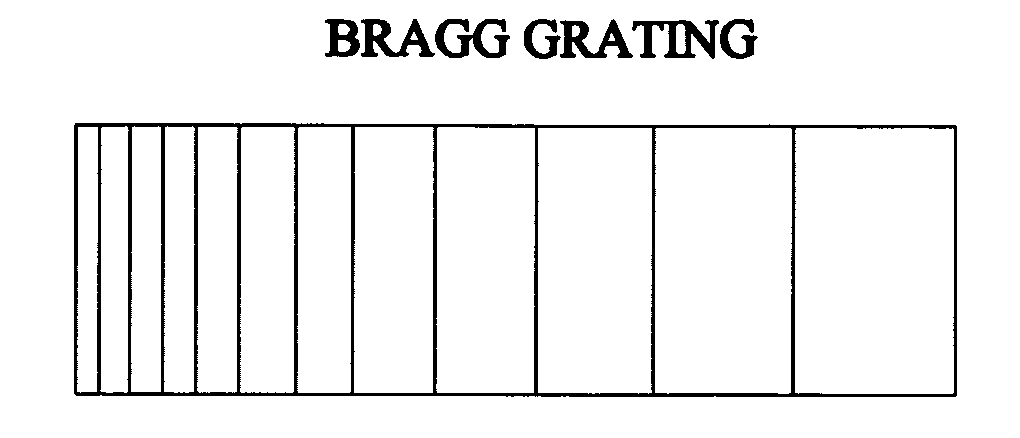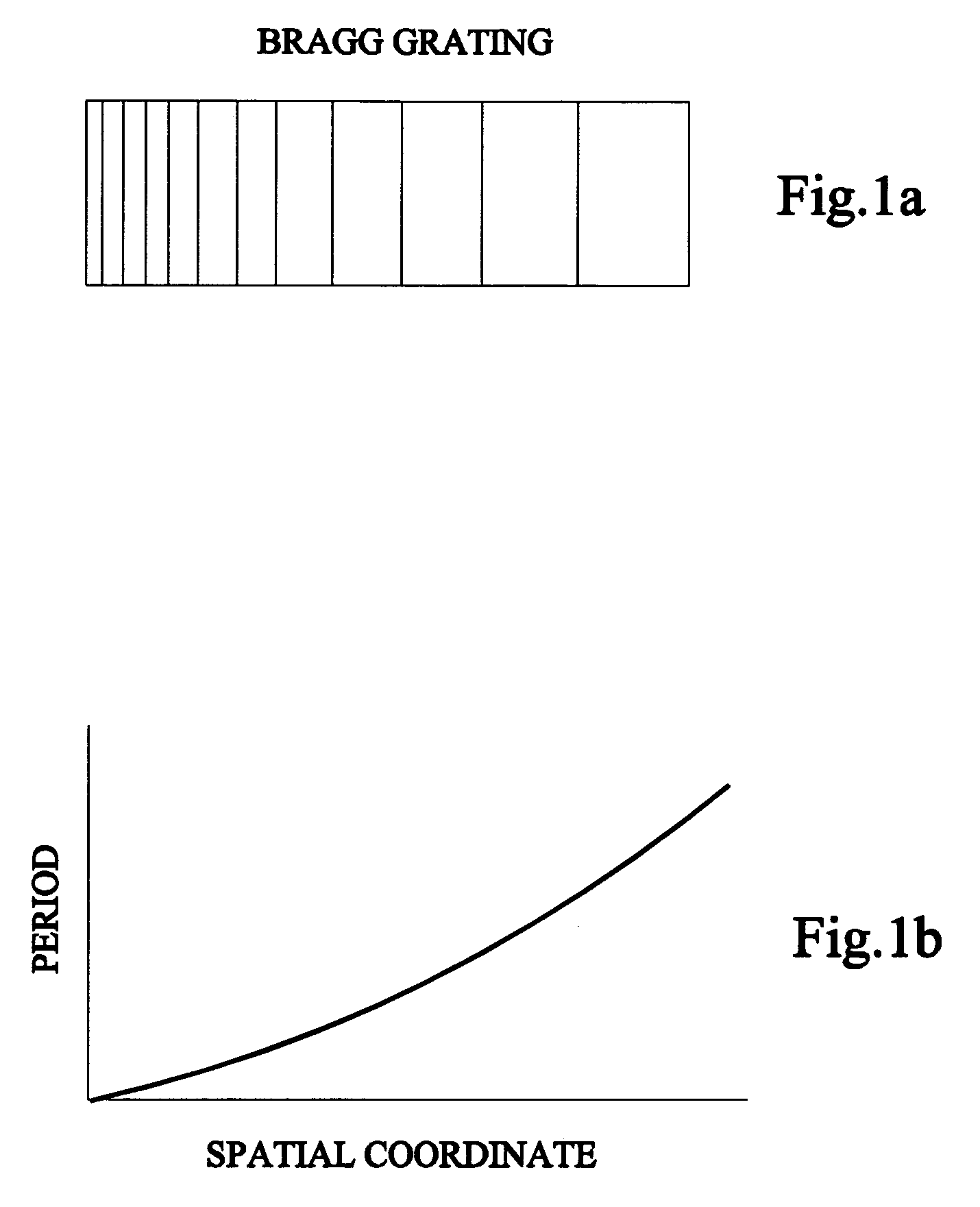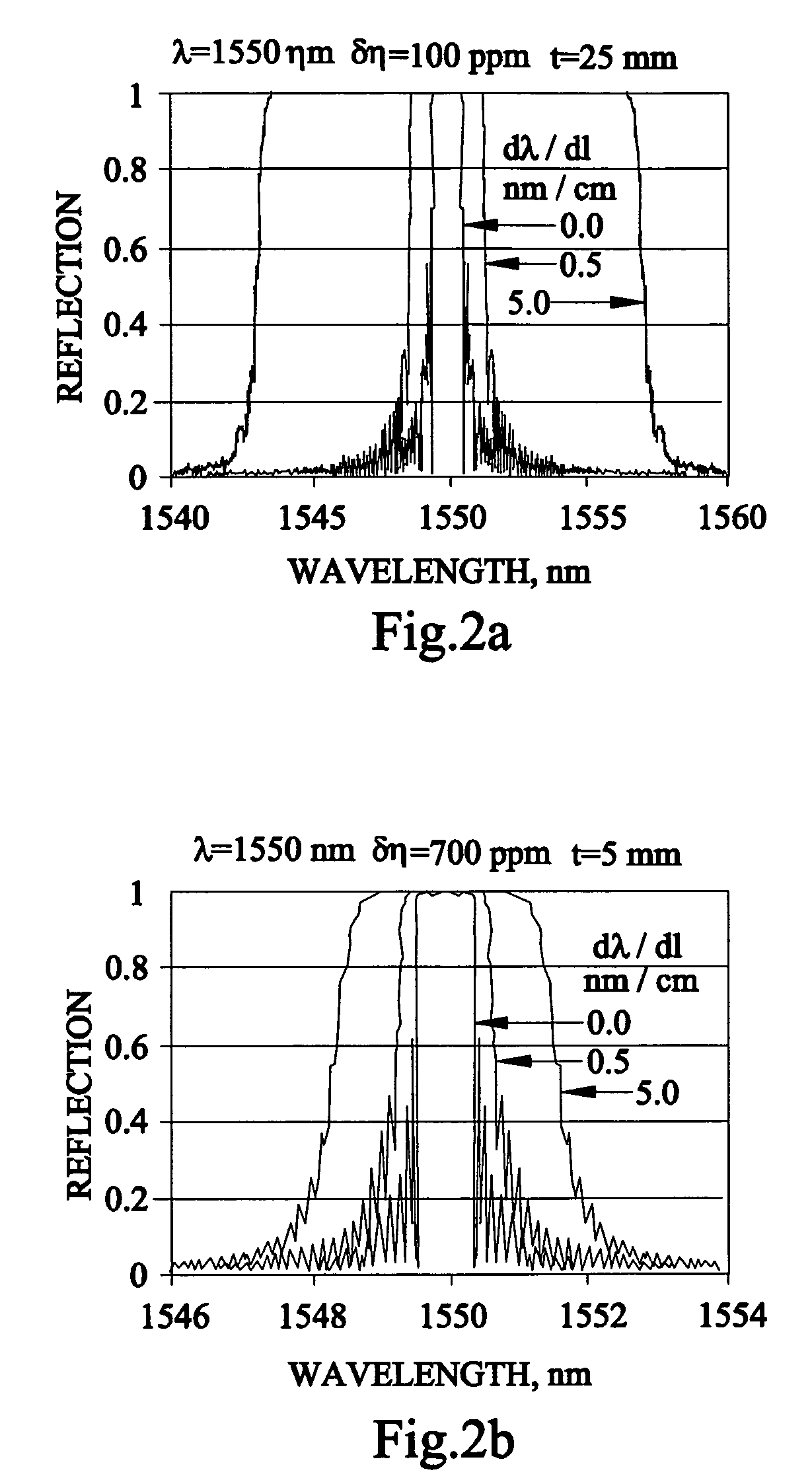Stretching and compression of laser pulses by means of high efficiency volume diffractive gratings with variable periods in photo-thermo-refractive glass
a technology of photothermo-refractive glass and diffractive gratings, applied in the field of diffractive optical elements, can solve the problems of fibers not being able to tolerate high power density, limited use of volume chirped gratings, and inability to model gratings with variable periods, etc., to achieve high efficiency for power amplification, broaden the spectral width, and eliminate significant beam distortions
- Summary
- Abstract
- Description
- Claims
- Application Information
AI Technical Summary
Benefits of technology
Problems solved by technology
Method used
Image
Examples
Embodiment Construction
[0032]Before explaining the disclosed embodiments of the present invention in detail it is to be understood that the invention is not limited in its applications to the details of the particular arrangements shown since the invention is capable of other embodiments. Also, the terminology used herein is for the purpose of description and not of limitation.
[0033]A serious limitation of surface-diffraction-grating compressors is associated with the restricted average-power handling capacity. Existing diffraction-grating compressors have not been able to tolerate more than 100-W of average power, with tens of watts being a typical limit. With fiber laser power exceeding 1-kW level, this limitation is becoming the main hindrance on the path of power scaling of ultrashort-pulse laser technology.
[0034]Previously, a solution of reducing complexity of CPA arrangement through the use of chirped volume Bragg gratings have been proposed, in order to overcome limited mode-area of chirped fiber B...
PUM
 Login to View More
Login to View More Abstract
Description
Claims
Application Information
 Login to View More
Login to View More - R&D
- Intellectual Property
- Life Sciences
- Materials
- Tech Scout
- Unparalleled Data Quality
- Higher Quality Content
- 60% Fewer Hallucinations
Browse by: Latest US Patents, China's latest patents, Technical Efficacy Thesaurus, Application Domain, Technology Topic, Popular Technical Reports.
© 2025 PatSnap. All rights reserved.Legal|Privacy policy|Modern Slavery Act Transparency Statement|Sitemap|About US| Contact US: help@patsnap.com



